Back Workout Hack For Bigger Lats!
Works On Every Back Exercise!
Today’s article is going to be about the number one mistake holding back your BACK growth.
The reason why this topic came up is because I was noticing that a lot of you are having a hard time re-engaging your back now that I have been teaching you to work with the stretch. I’ll leave a link here to my Skinny Guy/Hardgainer series if you haven’t seen it already, but basically in those workouts you are working with the Stretch, Flex, Overload technique. This is where you use one exercise which focuses on the stretch for a muscle, then one exercise which focuses on the flex, and finally one which overloads the muscle as much as possible after pre-exhausting it with the stretch and flex.
The number one mistake happening when you are using the stretch method is that you don’t know how to re-engage your back muscles so that your biceps don’t take over the movement. Obviously you’ll probably have been seeing some bicep gains, which is great! But if the goal is to get a bigger back, then you have to make sure when you’re doing your back workout that targeting your back, not biceps, is your primary focus. I’m going to cover a couple of different exercises here, to show you how to re-engage your back after sitting in the stretch.
Exercise #1: Lat Pulldown
The form with the lat pulldown is very simple. All you’re trying to do is pull the bar down to the top of your chest. For most of you, when you get into the stretched position, you immediately pull the bar back down without any real control or back engagement. What’s happening is that after you get into the stretched position and feel those lats being pulled nice and tight, you just lean back a bit too much and let your elbows come back, leading to a bit more upper back engagement, rather than isolating your lats. It’s all because of one simple movement that you’re skipping.

Once you get into the stretched position, you still have to retract and pull your scapula down in order to re-engage your back so that your biceps don’t take over the movement. That small movement from the stretch to the retraction will lead to a lot more back engagement happening.
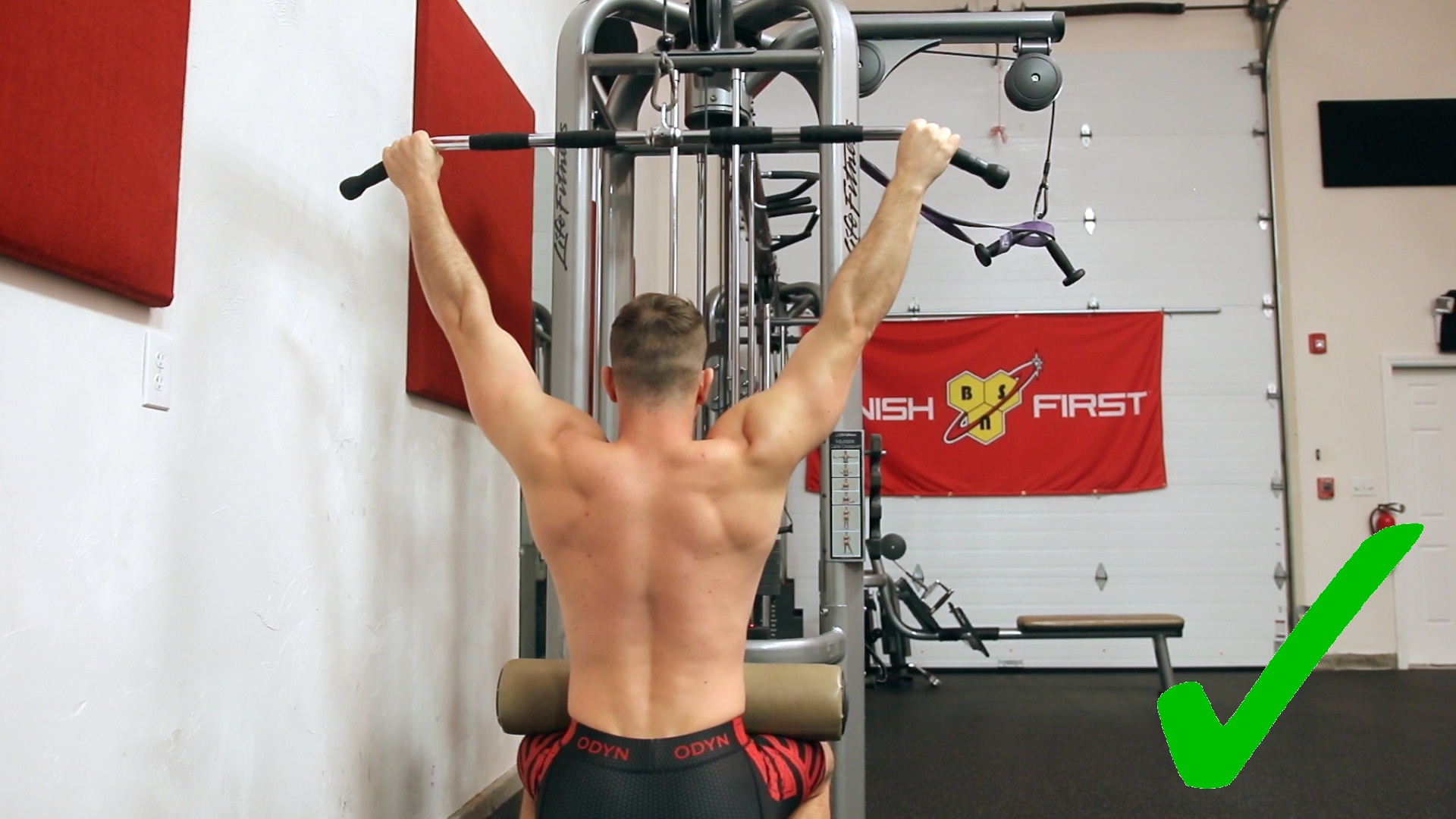
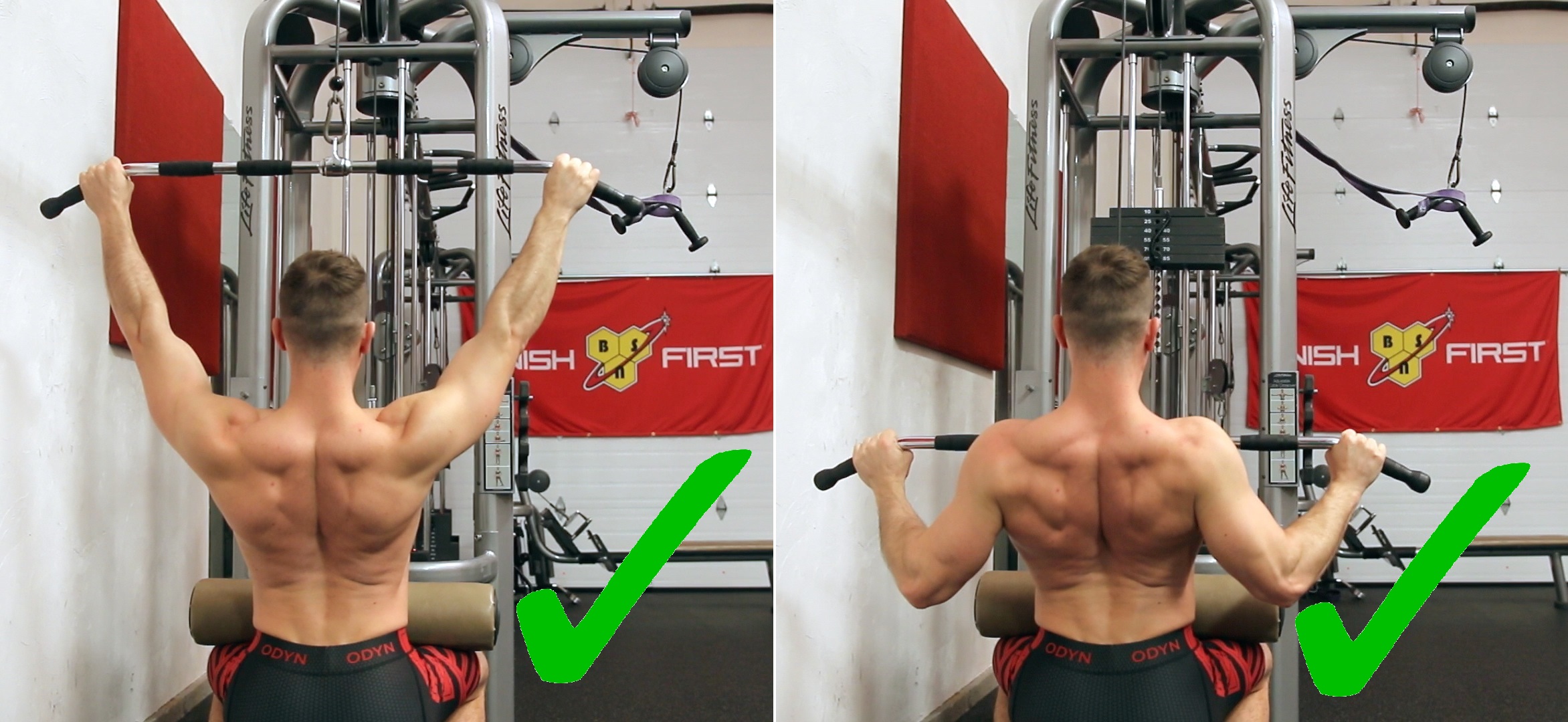
If you were ever to look at yourself from the side while doing this, if you don’t retract your scapula, then your elbows fly back and you end up pulling more towards your chin. When you do retract your scapula, your elbows stay more in-line with your hips, and the bar will come down to your chest. It’s a little movement that will make a big difference when it comes to being able to properly engage your back in your back workouts.
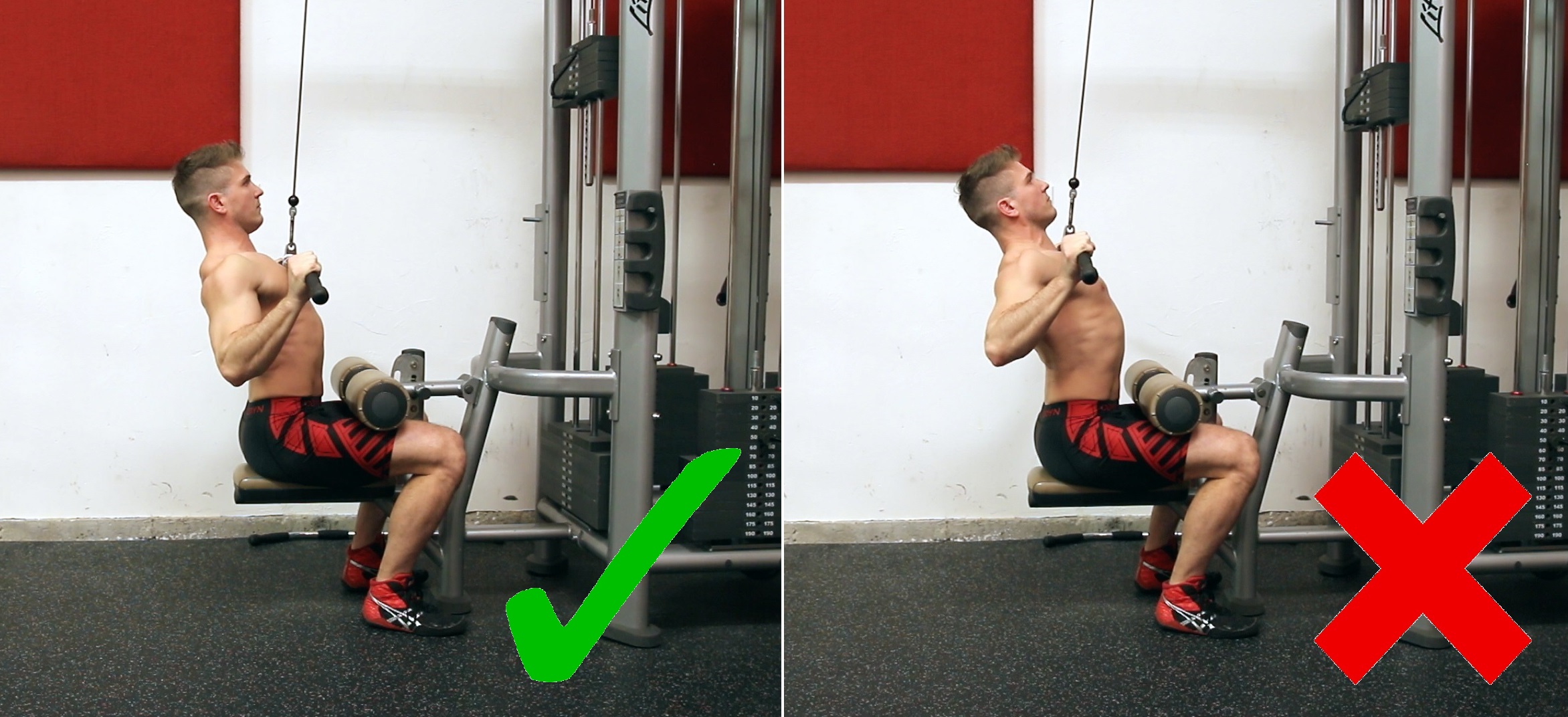
Exercise #2: Reverse-Grip Lat Pulldown
The same applies for reverse-grip pulldowns, as you don’t want to turn this into a simulation of a bicep curl. Unfortunately that’s what happens if you don’t know how to get back into the position of retracting your scapula and pulling your shoulders down. Again, once you get to the maximum stretched position at the top, you need to first retract, and then pull. If you have a hard time with this, it might be a good idea to go a bit lighter with the weight, then focus on this being two movements where you first retract, THEN pull, on every single repetition. As you get better at it, you’ll be able to do it in one solid smooth motion. It just takes time, but once you build that mind-muscle connection and you have full control, you’ll be able to do it no problem.
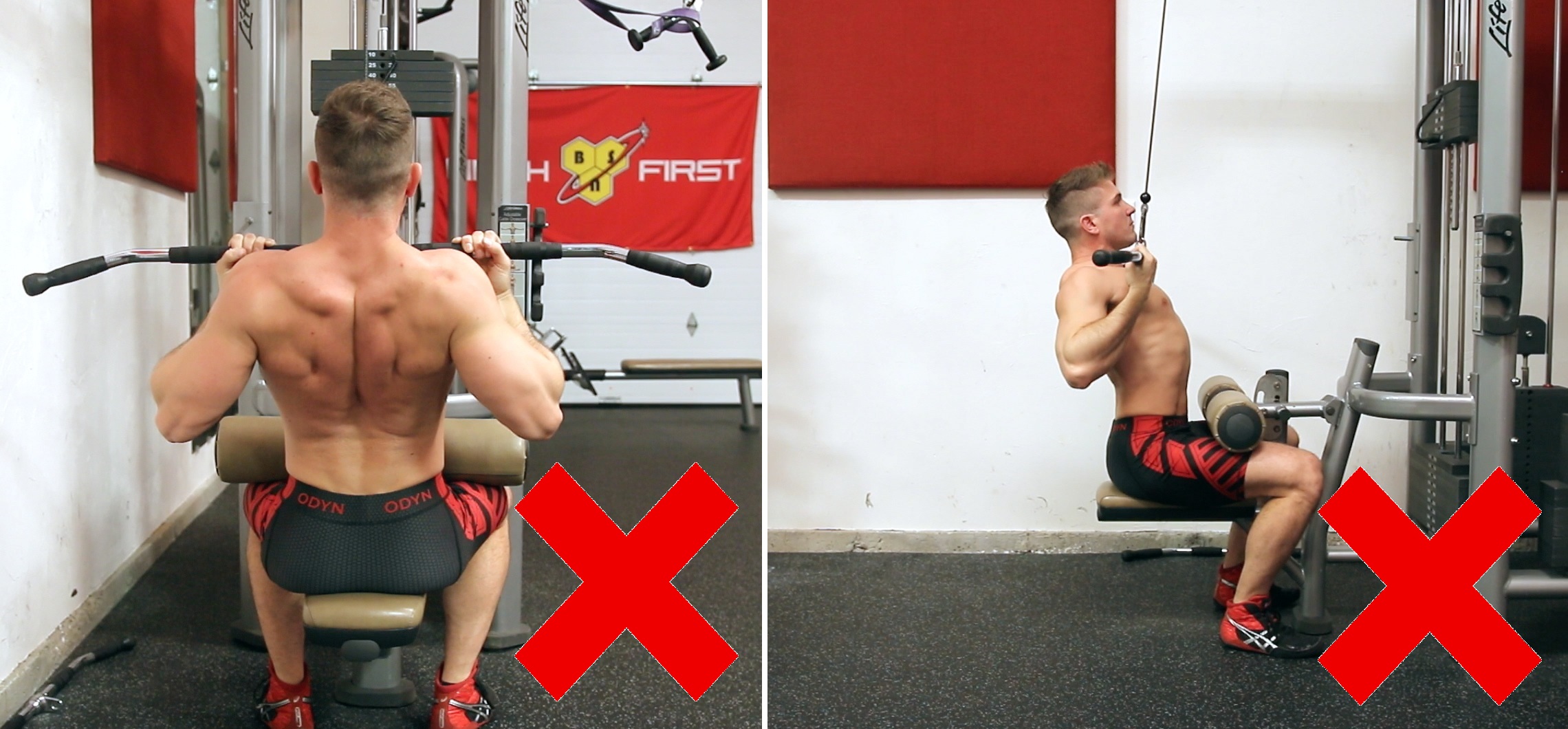
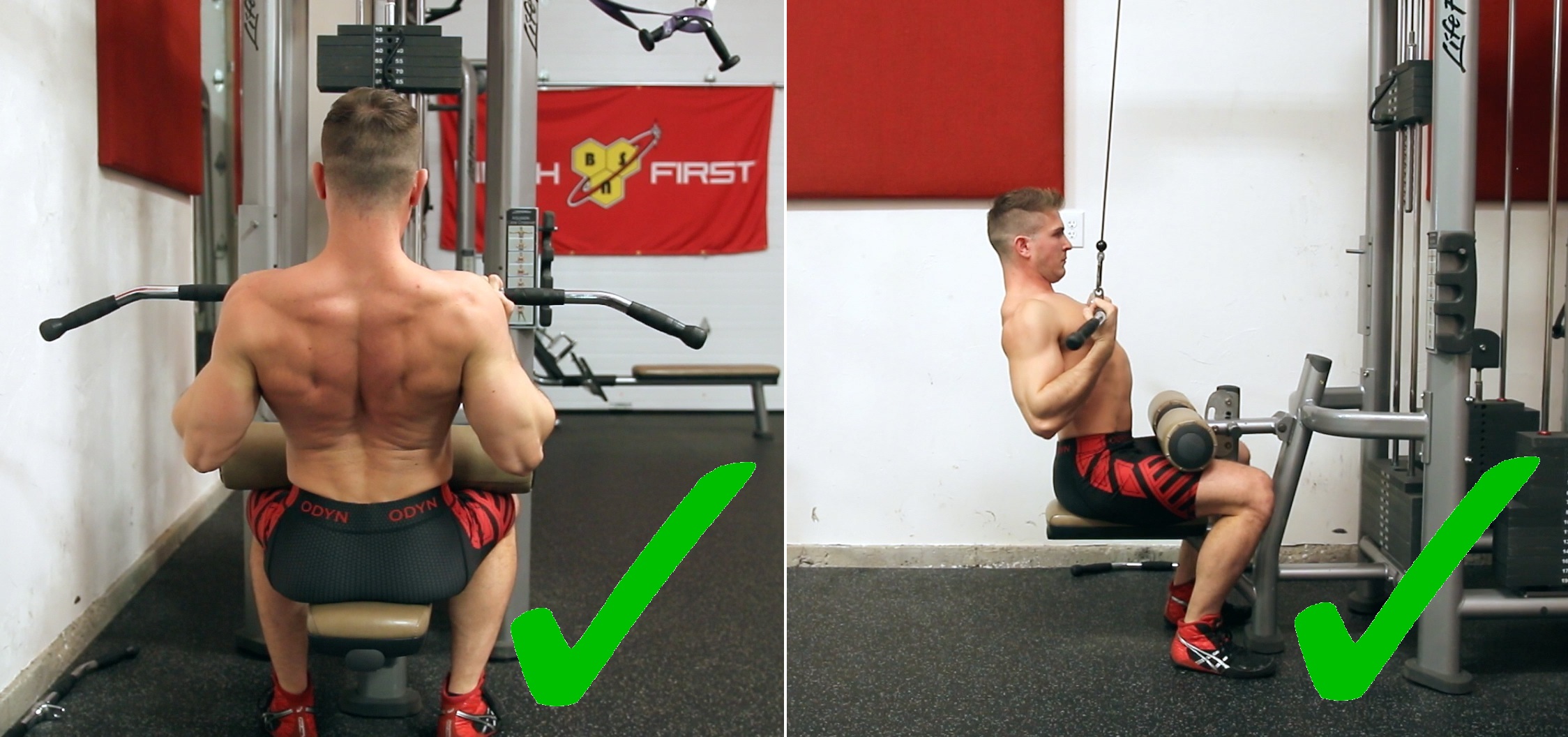
Exercise #3: Pull-Ups
It’s obviously much easier to sit in the stretched position with pull-ups because it’s literally the bottom of the movement where most people get stuck. But while in that bottom position, you need to be able to learn how to retract first, and then pull yourself up. This is how you REALLY engage your back and take your biceps out of the movement as much as possible. Obviously you are still working your biceps a little bit, but if you don’t do the retraction then you won’t hit your lats as hard as possible. The same form here goes for chin-ups as well.
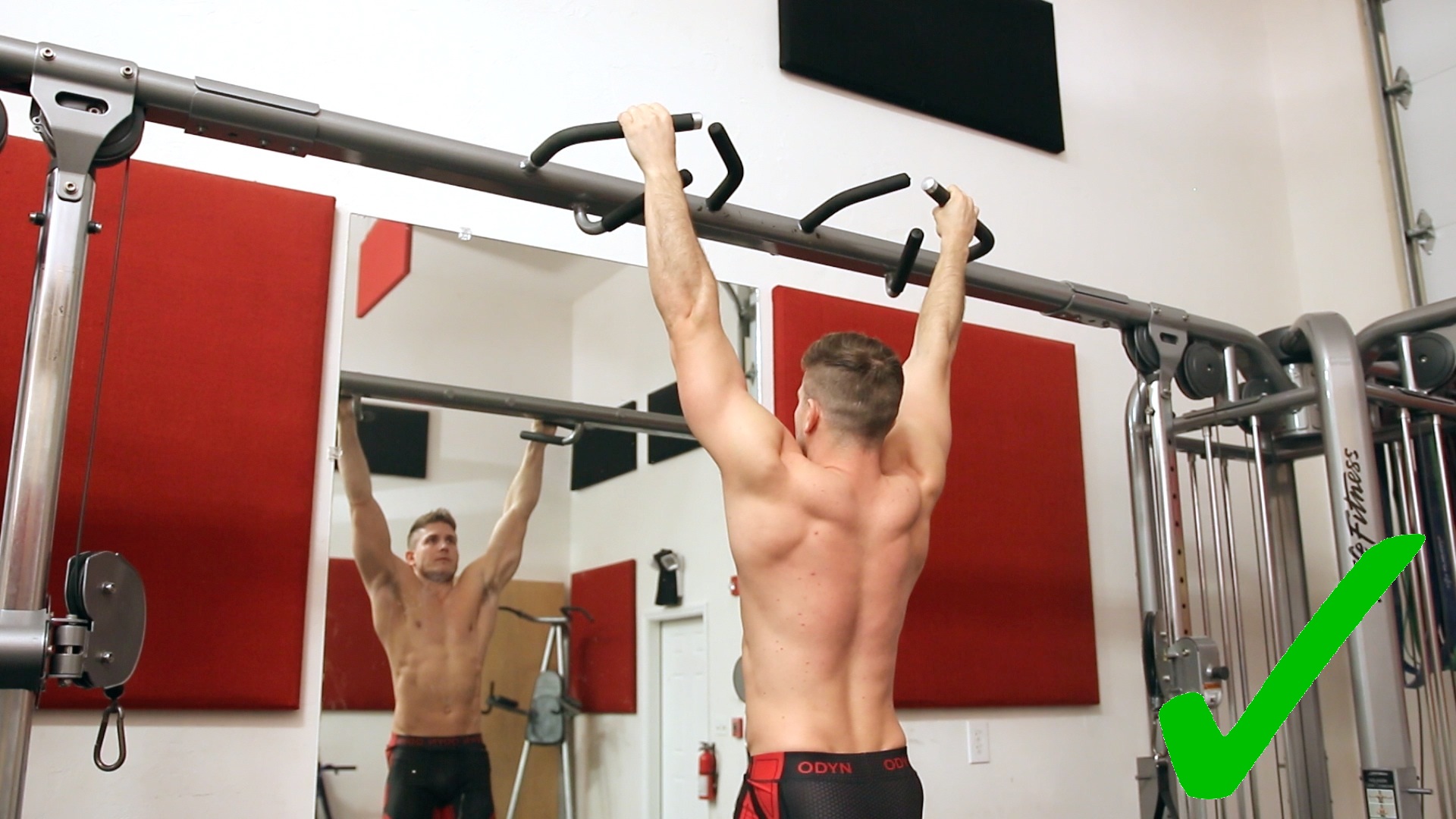
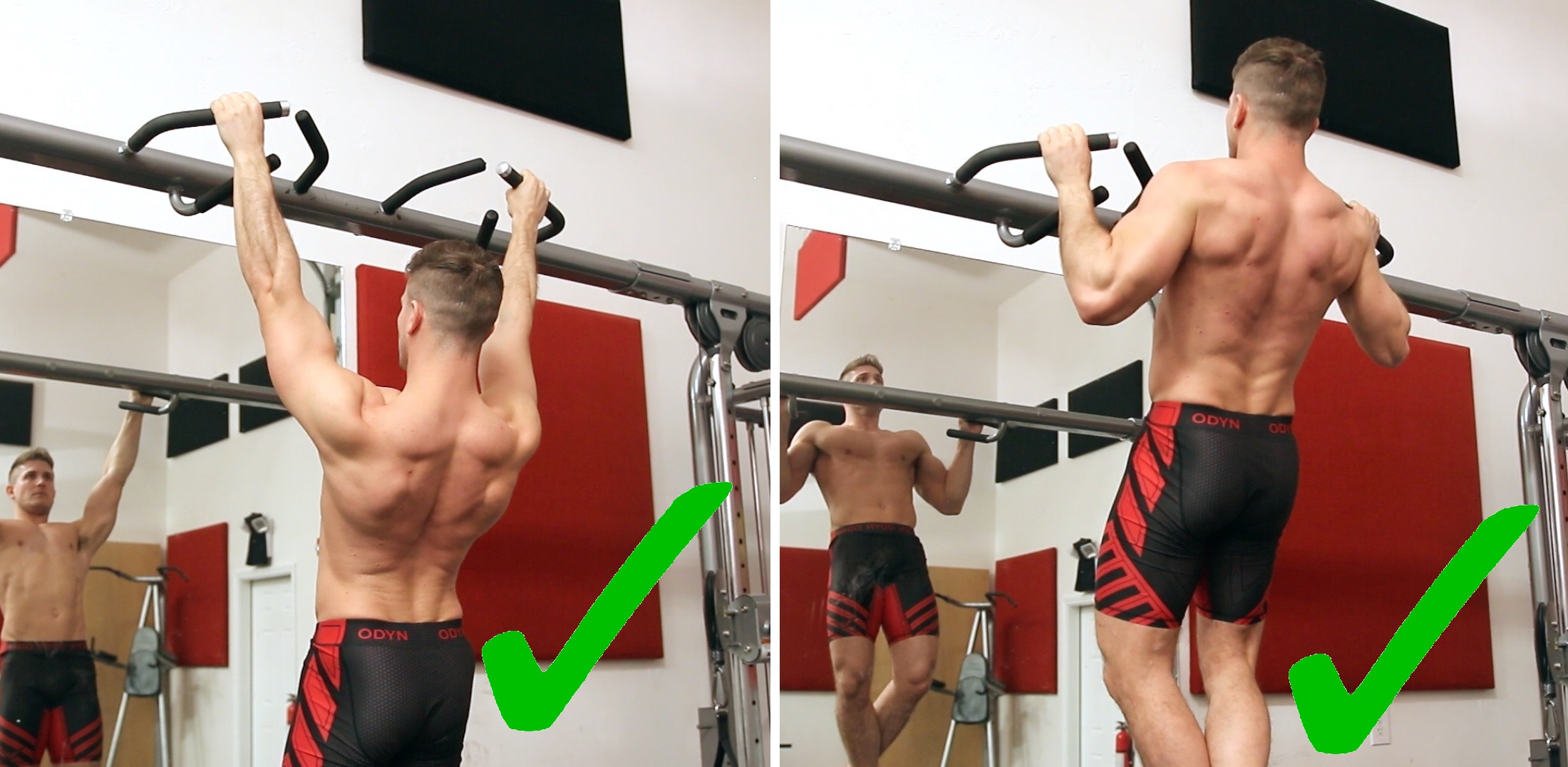
Exercise #4: Seated Row (T-Bar Or Standard)
Any kind of row like this is probably the easiest way to teach your body this retracting movement. Once you get into position, seated upright with your shoulders neutral, you want to come forward to get a nice stretch, and then pull back by retracting first BEFORE you actually pull with your back and bring your hands to your torso. When you retract your scapula and shoulders first, you’ll notice that you’ll pull the handle attachment to your belly button, whereas if you don’t retract first, you end up pulling higher and getting more upper back engagement.
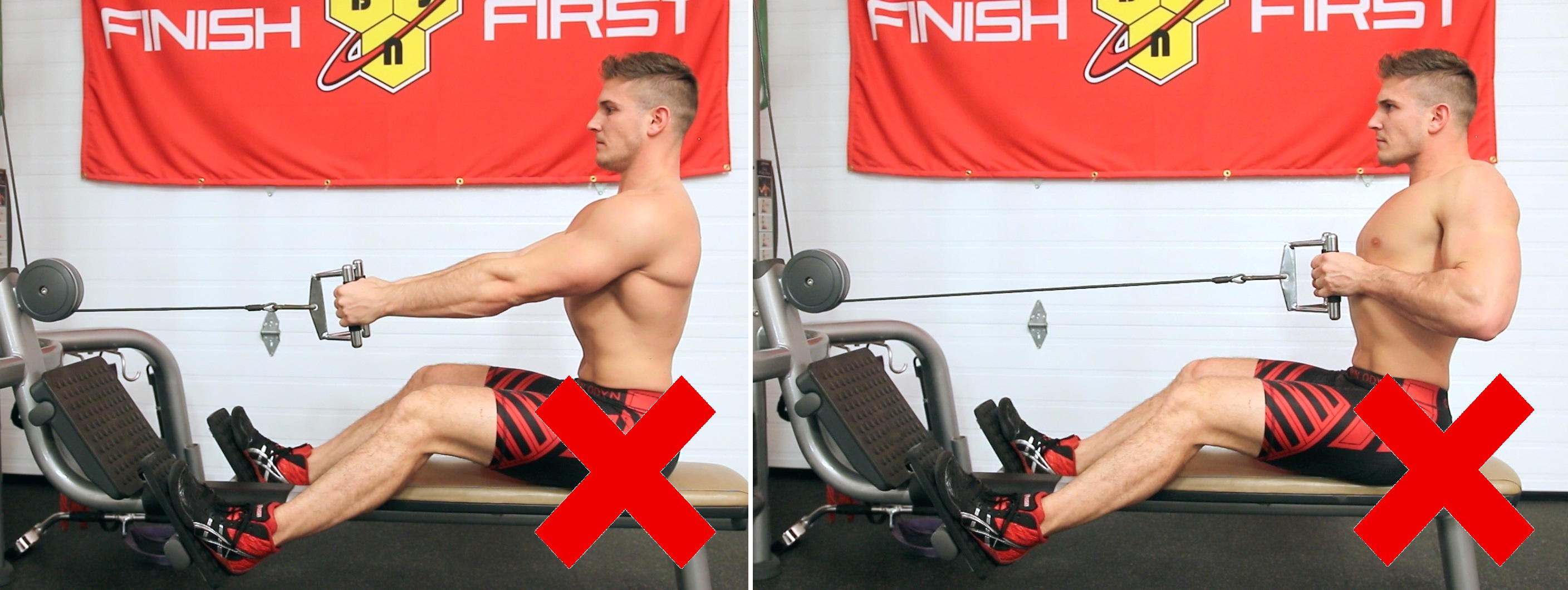
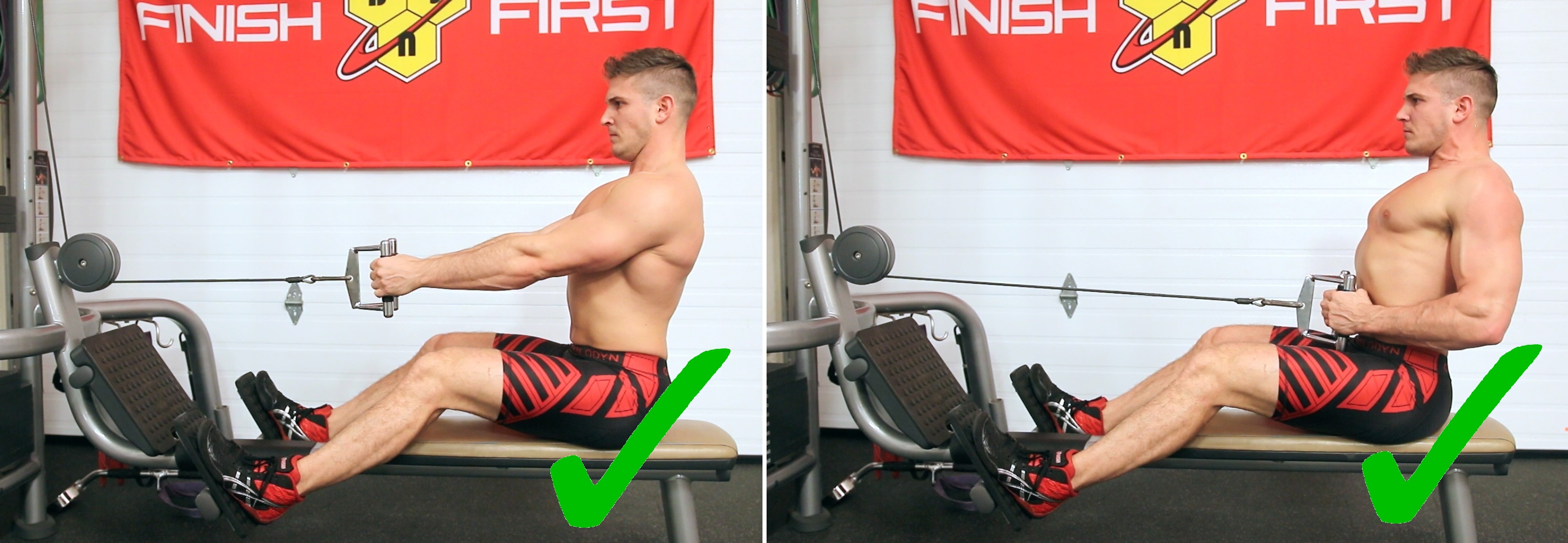
If your goal is to hit your upper back, then that’s fine, but if you’re really trying to smash your lats, you want to retract AND THEN pull. Just like we talked about with the pulldowns, start this off as two separate movements to when you retract, and then pull your arms back, and as you get better and better at it, you’ll be able to turn it into one movement and hit your back as hard as possible.
Exercise #5: Barbell Bent-Over Row (Underhand-Grip)
Remember, when doing a barbell bent-over row, if you’re using an overhand-grip, you’re hitting more posterior deltoids and upper back. If you’re using an underhand-grip, you’ll actually get a lot more lat engagement. If you fail to do any retraction with this movement before you pull the bar, then you’ll end up pulling a bit higher and you’ll still hit a bit more upper back even with an underhand-grip. However, if you get a nice deep stretch, retract, and then pull, the bar should come straight to your belly button, and that is going to maximize your lat engagement when doing this exercise.
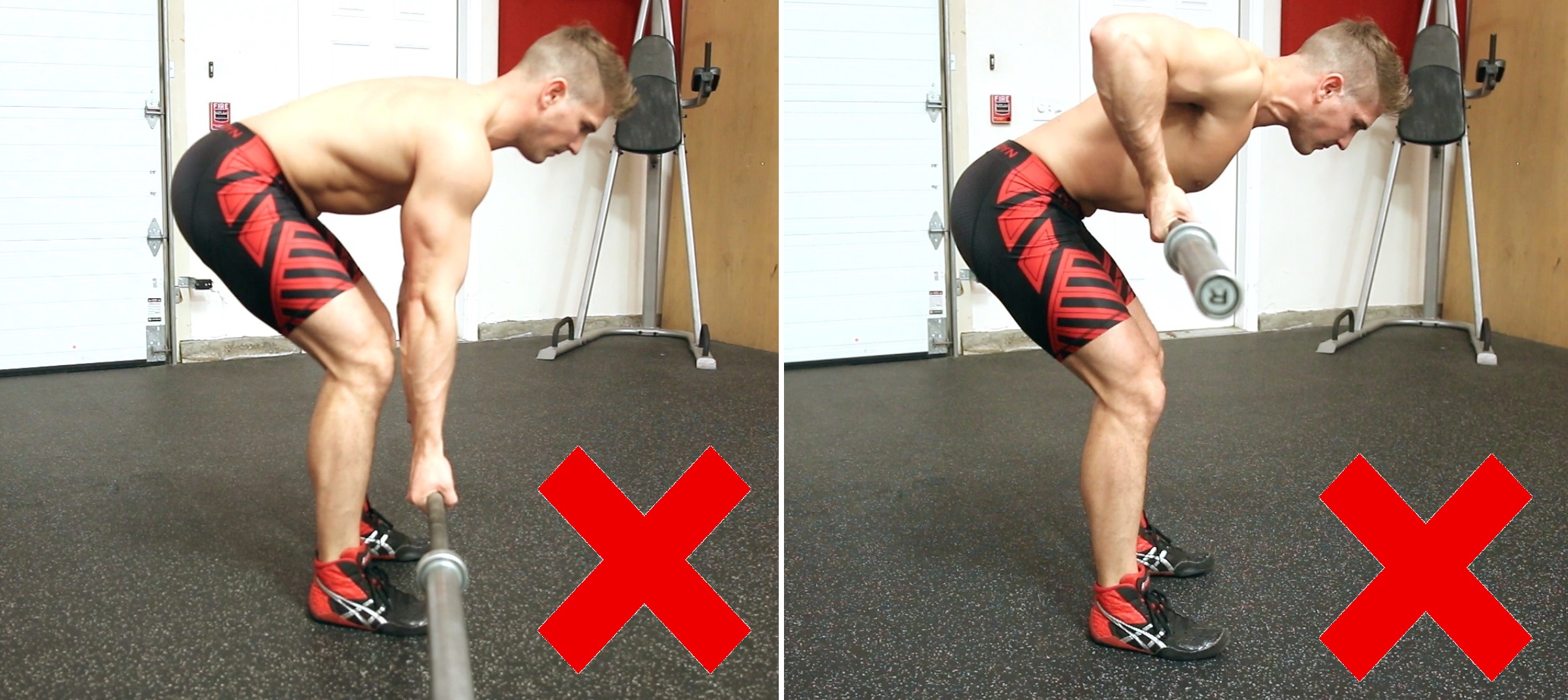
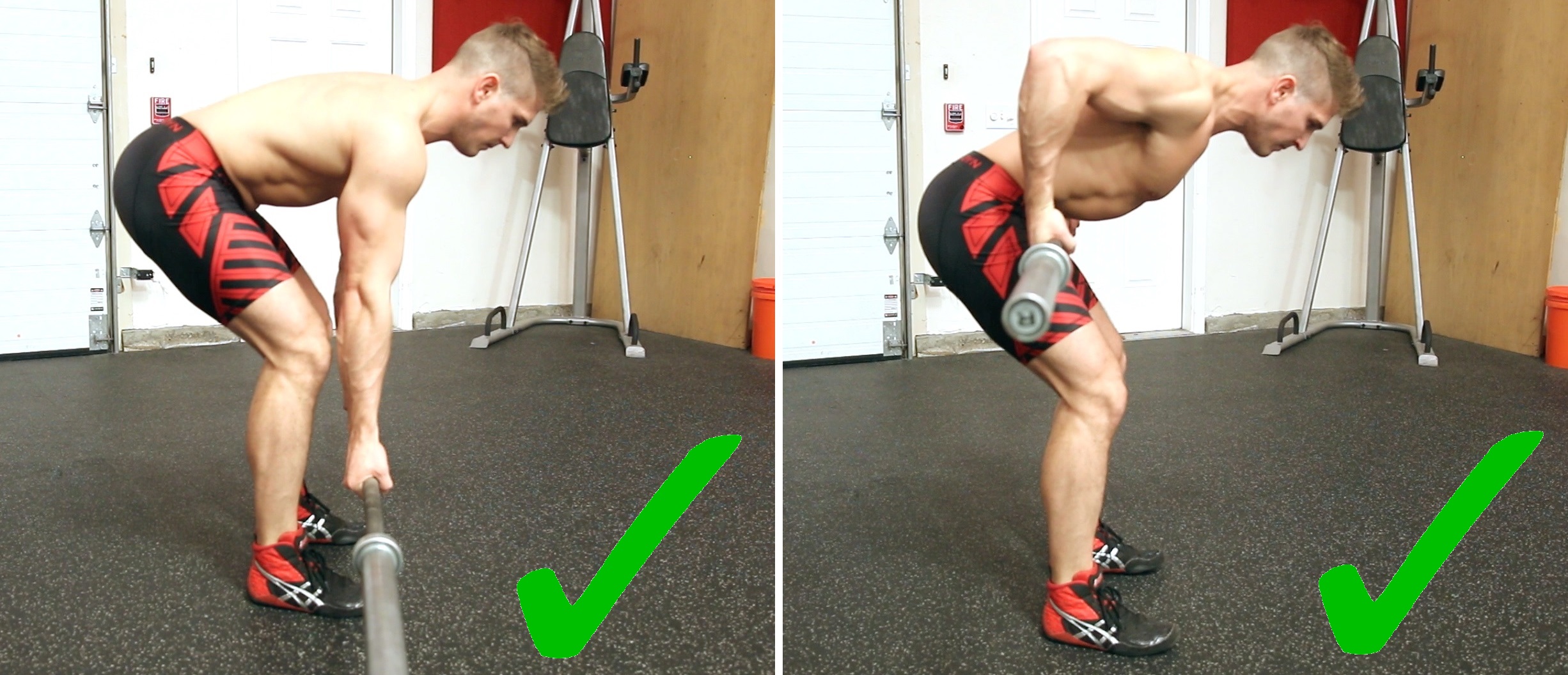
Conclusion
When it comes to training your back, obviously biceps are a secondary mover, but you have bicep workouts to train biceps. If you’re doing a back workout, you want to make sure that you’re hitting your back as hard as possible. If lats are a lagging area for you, it’s probably because you’re making this simple mistake, and it’s as easy to correct it as following the proper technique I just explained on all these different exercises!








